Clock rates and overclocking reserves
AMD has now managed to do that with the beat really well. The Radeon RX 6800 XT achieves well over 2250 MHz in Full-HD and also WQHD in places, and in places this even goes up to about 2400 MHz for a short time. Fully warmed up and in Ultra-HD it’s still between 2175 and 2200 MHz, depending on game and load. If you increase the power limit by the maximum possible 15%, then the clock rate even goes a bit higher, because it stabilizes up to 2400 MHz and even a bit higher, depending on the chip quality. For a short time peaks of just over 2.5 were also visible, but only briefly and only for the gallery. The OC potential isn’t too high, though, as the card already clocks quite high ex works and you can’t always top up the power limit, because AMD restrictively cuts the voltages via the firmware, no matter what you set externally (see chapter power consumption).
In my view, the RX 6800 has the higher OC potential. If you have to live with values around 2.1 GHz in normal operation in UHD and a little over 2.2 GHz in Full-HD, you can easily reach the 2.5 GHz limit with overclocking, depending on the chip. As the performance still scales quite well with the clock (better than with amps), the increase in performance is greater here than with the RX 6800 XT, as the gain in clock speed is significantly higher.
GPU and GDDR6 memory temperatures
Now let’s look at the temperatures. AMD still relies on the so-called hotspot temperature internally, but now solves this in a much smarter way with more and cleverly positioned measuring points or sensors. The sum can reach up to 110 °C at the peak, but in practice it was only 100 °C. We’ll remember the kink at minute 5 for the fans in the next chapter. The “GPU diode” (we also know from NVIDIA), which is internally called the Edge temperature by AMD, is clearly below this value.
I was able to read out the GDDR6 with the help of a special engineering tool. It’s interesting that there are even two values per memory module, because the memory also has twice the capacity and apparently outputs two sensors. From these 16 single values the tool then weights the memory temperature, which I have shown you in the graphic. The memory remains, even in the long term, inside (substrate) at just over 70 °C, which is an excellent temperature. The highest readout values are likely to be generated by the two modules that are not directly cooled by the vapor chamber. But it’s also so perfect.
This is also impressively proven by the IR image, where I intentionally operated the card with backplate, because I could read the memory (and much more) anyway. The voltage transformers internally return temperatures of not even 70 °C, exemplary.
We can see that the RX 6800 acts significantly cooler, at least in the hotspot, and even stays below 82 °C. However, the edge temperature of just under 70 °C is higher than that of the RX 6800 XT, whereby the RAM now almost freezes at only 65 °C. So this cooling solution also works without any restrictions or problems.
Here, the IR image can be used again as confirmation, because everything stays nice and cool.
- 1 - Einführung und technische Details
- 2 - Teardown: Platine, Spannunsversorgung, Kühler
- 3 - Borderlands 3
- 4 - Control (+DXR)
- 5 - Far Cry New Dawn
- 6 - Ghost Recon Breakpoint
- 7 - Horizon Zero Dawn
- 8 - Metro Exodus (+DXR)
- 9 - Shadow of the Tomb Raider
- 10 - Watch Dog Legion (+DXR)
- 11 - Wolfenstein Youngblood
- 12 - World War Z
- 13 - Leistungsaufnahme und Effizienz im Gaming
- 14 - Leistungsaufnahme, Spannungen und Normeinhaltung
- 15 - Lastspitzen und Netzteil-Empfehlung
- 16 - Taktraten und Temperaturen
- 17 - Lüfter und Geräuschemission ('Lautsärke')
- 18 - Übersicht, Zusammenfassung und Fazit















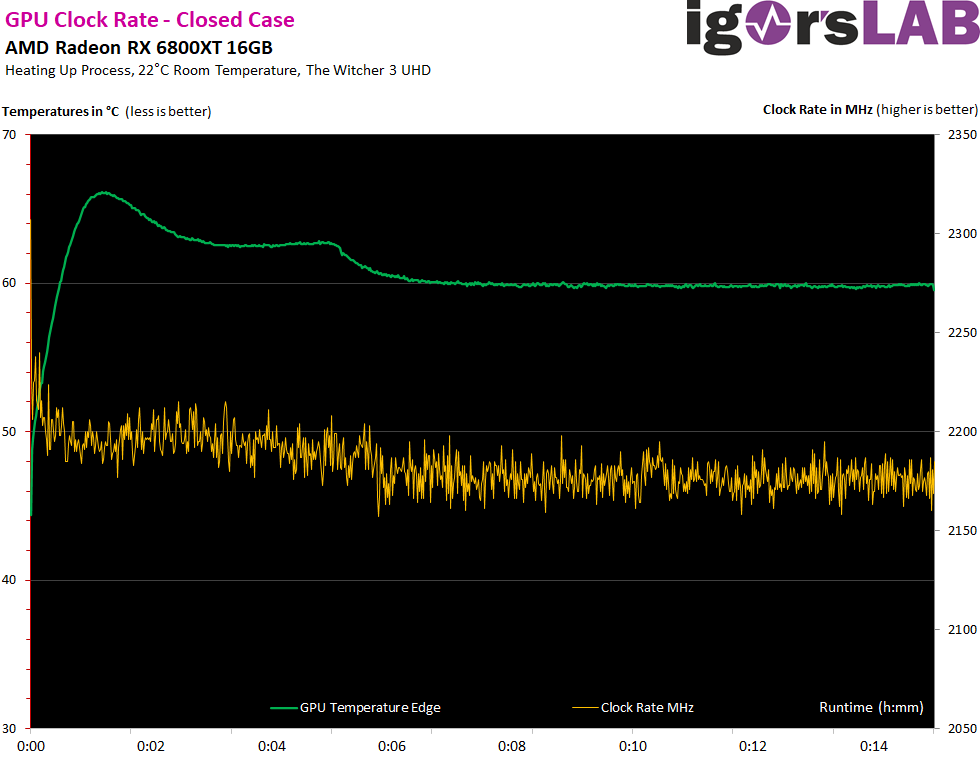
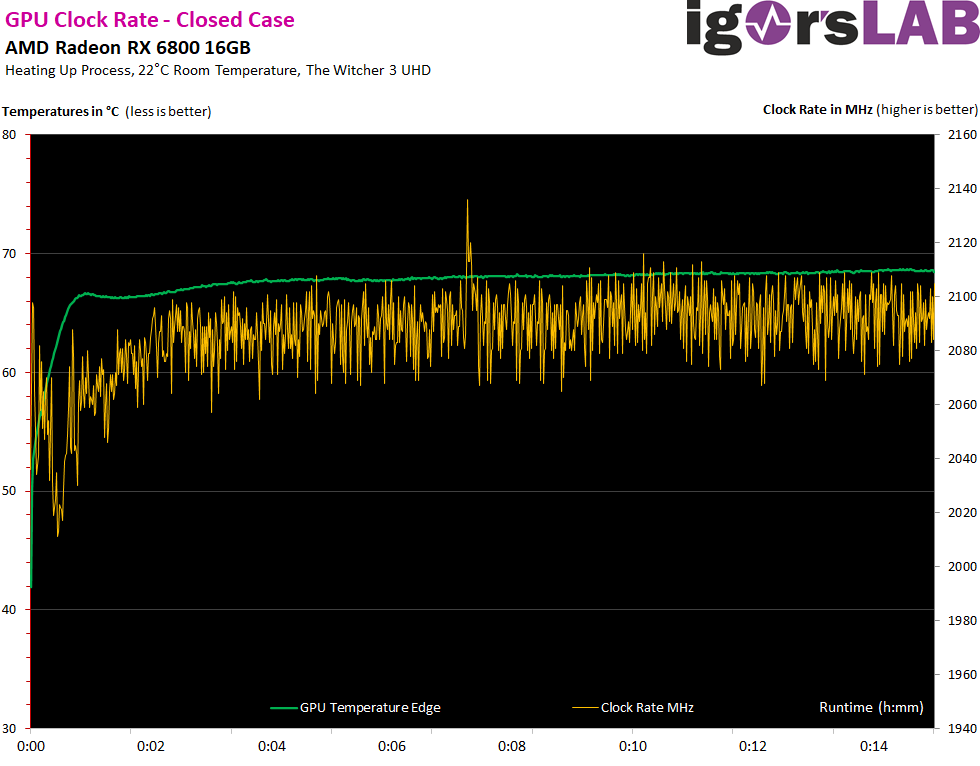
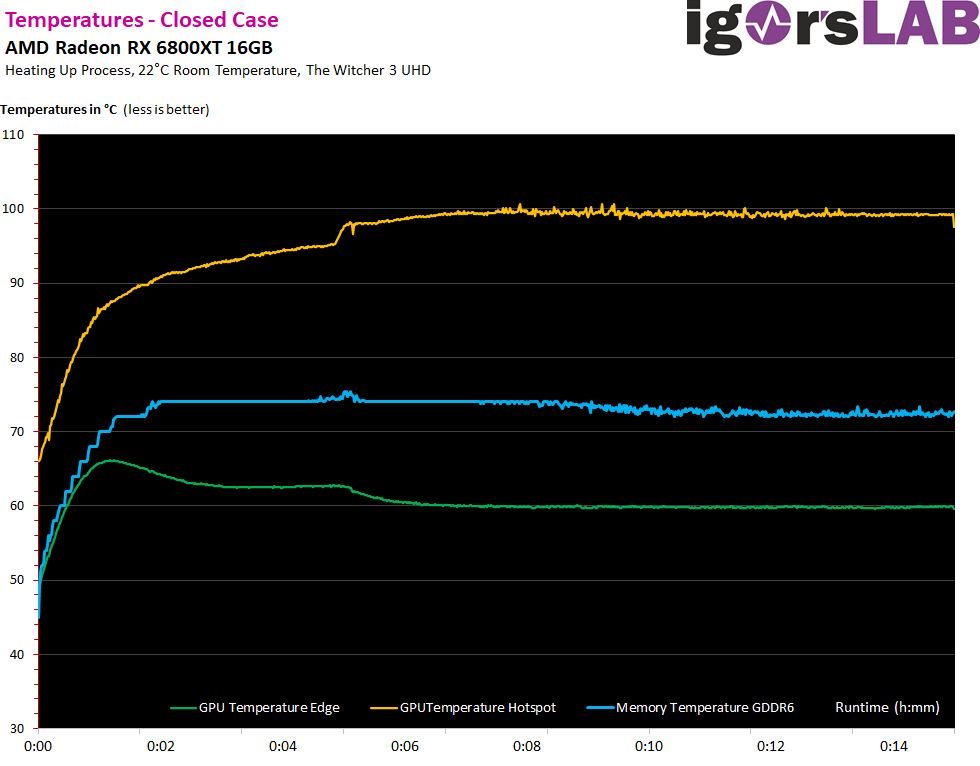
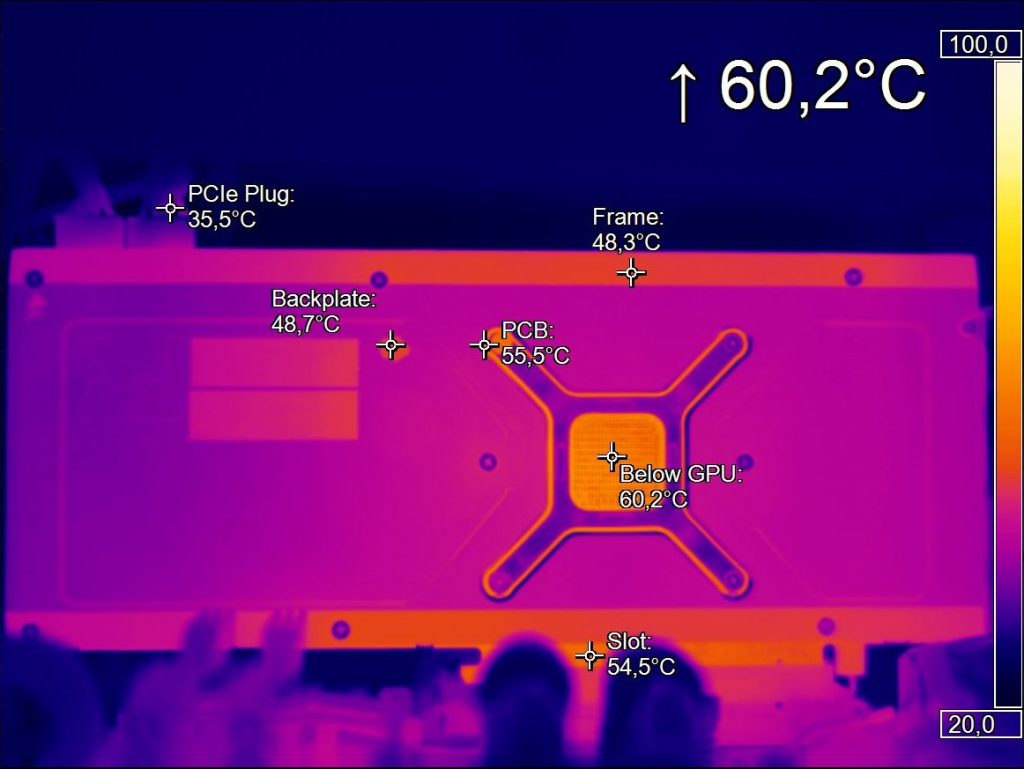
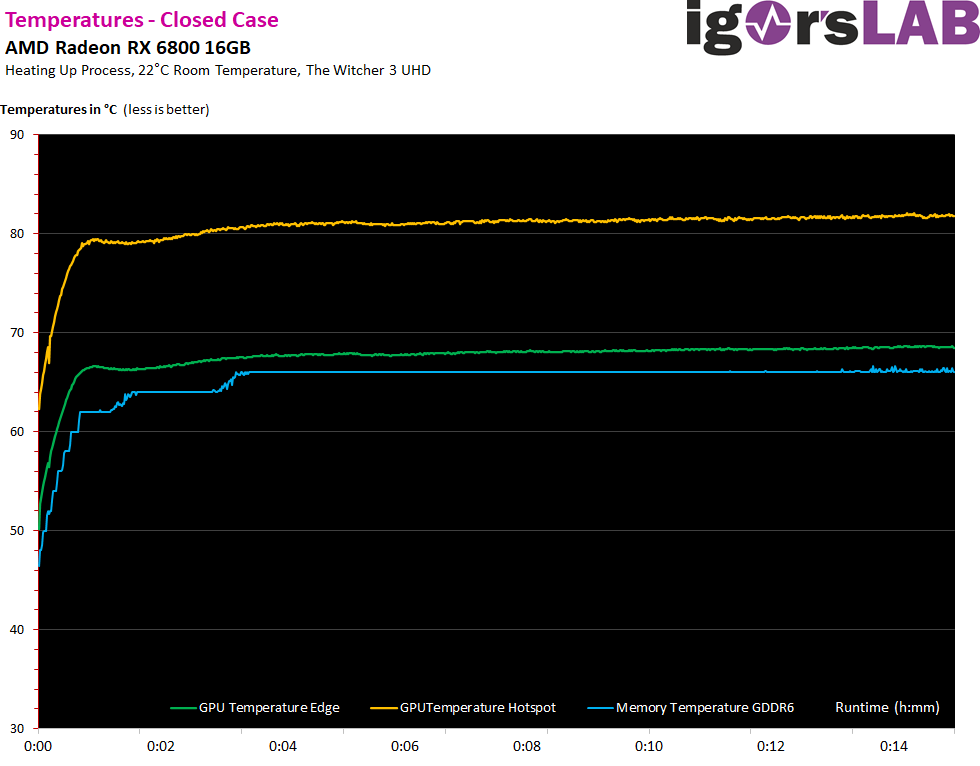
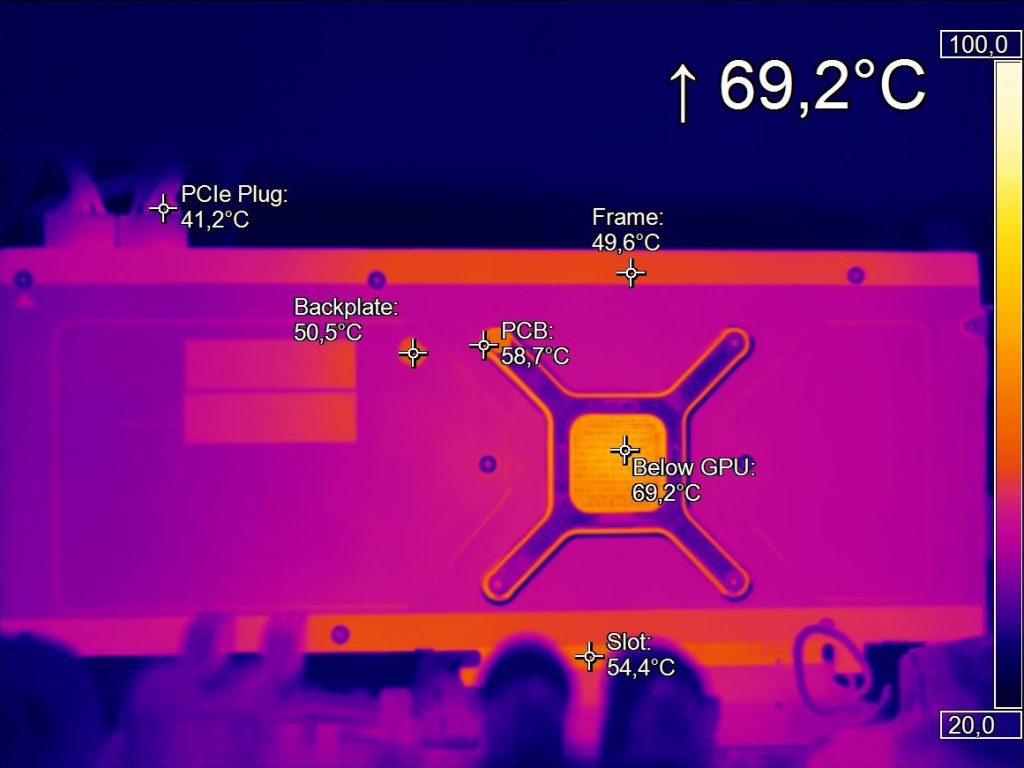


















Kommentieren